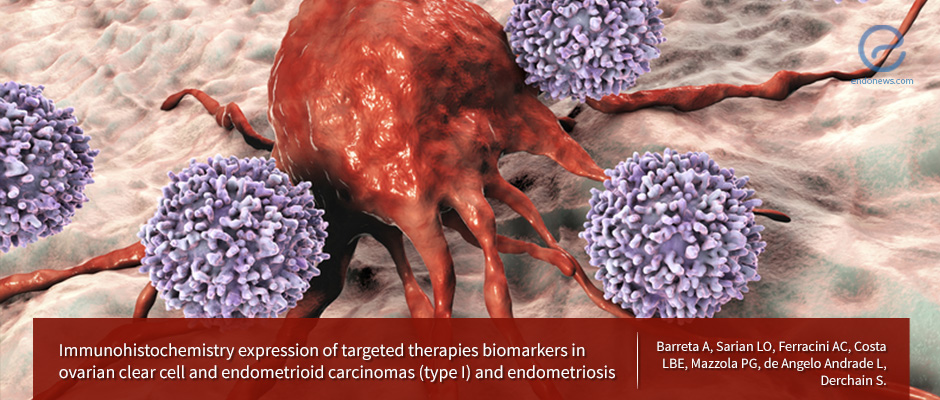Targeted therapy biomarkers in endometriosis associated ovarian carcinomas
Dec 21, 2018
The potential use of targeted therapy biomarkers in endometriosis associated ovarian carcinomas
Key Points
Highlight:
- Endometriosis-associated ovarian carcinomas express targeted therapy biomarkers. Treatment trials for targeted therapies may use these results as a basis.
Background:
- Endometriosis in ovaries is a known precursor of endometrioid and clear cell carcinomas. They are named as endometriosis-associated ovarian carcinomas.
- Patients with endometriosis have two times risk for these cancers than the general population.
- ARID1A is a protein which protects cells from becoming cancerous. When mutations occur in the ARID1A gene, protein cannot be formed and cannot be detected by immunohistochemistry while the normal (wild-type) protein can be visualized. ARID1A expression is lost both in endometriosis and associated ovarian carcinomas.
- VEGF (Vascular endothelial growth factor, a marker for anti-angiogenic therapies), PD-L1 (programmed cell death receptor 1, used as a marker for immunotherapy), and PARP-1 [poly (ADP-ribose) polymerase, a marker for PARP inhibitor drugs] are biomarkers for target therapies.
What's Done Here
- A retrospective, single-center cohort study aiming to assess ARID1A and target therapies biomarker expression in endometriosis-associated ovarian carcinomas.
- Out of a total of 50 clear cell or endometrioid type ovarian carcinoma (18.3%) were encountered in a 21-year-period, 36 tumors and accompanying 24 endometriosis evaluated.
- Immunohistochemical expressions compared in carcinomas and endometriosis regarding clinicopathological features and survival.
Key Results:
- Endometriosis-associated carcinomas were diagnosed in early stages (p=0.008).
- ARID1A loss of expression was observed both in endometriosis (60%) and carcinoma (40%).
- Targeted therapy biomarkers are expressed both in endometriosis and associated ovarian carcinomas.
- VEGF expression is increased in cancer compared to associated carcinomas (p=0.0002). PD-L1 and PARP-1 expressions were not significantly different.
- PARP-1 overexpression correlates with worse progression-free survival (p=0.03) and overall survival (p=0.01). Other markers did not have any association with clinicopathological features.
Lay Summary
Endometriosis in ovaries is a known precursor of endometrioid and clear cell carcinomas. They may be resistant to classical therapies. Researchers search for alternative and targeted therapy options.
This study, from the University of Campinas, Campinas, São Paulo, Brazil, will be soon published in Human Pathology.
Barreta et al. searched for ARID1A and target therapies biomarker expressions.
ARID1A is a protecting protein for the cells from becoming cancerous. If mutations occur in the ARID1A gene, its protein cannot be formed and cannot be detected by immunohistochemistry. ARID1A expression is lost both in endometriosis and associated ovarian carcinomas.
VEGF (Vascular endothelial growth factor), is a marker used in this study for evaluation of anti-angiogenic therapies. Authors found that VEGF expression is increased in carcinomas compared to endometriosis.
PD-L1, programmed cell death receptor 1, is a marker for evaluating immunotherapy, and PARP [poly (ADP-ribose) polymerase], is a marker for PARP inhibitor drugs. PD-L1 and PARP-1 expressions were not significantly different in endometriosis and associated endometriosis-related ovarian carcinomas. Survival analysis revealed that PARP expression in tumors is associated with early recurrence and worse survival.
Based on the above findings, the authors concluded that endometriosis-associated ovarian carcinomas express targeted therapy biomarkers.
Treatment trials for targeted therapies may use these results as a basis, authors added.
Research Source: https://www.ncbi.nlm.nih.gov/pubmed/?term=30447298
endometriosis ovarian carcinoma clear cell carcinoma endometrioid carcinoma endometriois associated carcinoma ARID1A VEGF PD-L1 PARP-1

